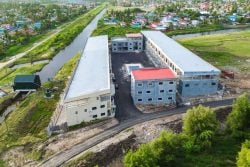SANTA CRUZ, Bolivia/ LA PAZ, (Reuters) – In the lowland Bolivian region of Santa Cruz, being gripped by some of its worst wildfires on record, nurse Raúl Gutiérrez said that the acrid sting of smoke almost never goes away and day has started to look almost like night.
The South American country is on track for potentially a record year of fires, exacerbated by drought and land clearances linked to booming production of cattle and grains, especially around the wealthy farm city of Santa Cruz.
While the fires have been raging for weeks, in recent days the smoke over cities like Santa Cruz and Cochabamba has worsened, with images showing city monuments shrouded by the smog. The air pollution reading on Wednesday was among the worst in the world.
“The smoke is persistent, it is strong. We hope it dissipates but there are no signs or chances of rain,” said Gutiérrez, adding it was worst at dusk, dawn and midnight.
He added that increasing numbers of people were having breathing problems, eye issues and headaches due to the smoke, while school classes had been suspended.
“The sun practically has an orange hue, it looks just like the moon at night,” he said.
Breathing in pollution from wildfire smoke can be deadly or lead to long-term breathing problems, with a June study in the journal Science Advances finding that it had lead to at least 52,000 premature deaths in California alone over a decade.
Satellite images show alarming levels of particulate matter and carbon monoxide in the air. And data from Brazilian official body INPE shows Bolivia potentially on track for its worst number of active fires on record for the month of September.




